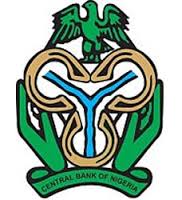CBN insulates 8 banks against distress
By Busolami Idowu
A new supervision framework to monitor the operations of the country’s top eight banks has been unveiled by the Central Bank of Nigeria (CBN).
The framework is aimed at insulating them from the distress syndrome that has affected most financial systems in the aftermath of the 2007 global financial meltdown.
The draft framework for Supervision of Domestic Systematically Important Banks in Nigeria, issued by the CBN in May, identified First Bank of Nigeria Plc, United Bank for Africa Plc, Zenith Bank Plc, Access Bank Plc, Ecobank Nigeria Plc, Guaranty Trust Bank Plc, Skye Bank Plc, and Diamond Bank Plc as the banks that must be closely monitored to ensure that they did not get distressed
Following the 2007 global financial crisis, the CBN and the Nigeria Deposit Insurance Corporation (NDIC), as the banking sector regulators, adopted a number of measures to rescue the financial system and ensure stability, including raising banks’ minimum capital base to N25billion and granting bailouts and guarantees to distressed banks.
Systematically Important Banks (SIFIs) include banks, insurance, and other financial institutions whose distress or failure, as a result of their size, complexity and systemic interconnectedness, is capable of significantly disrupting the wider financial system and economic activity in the country.
However, the CBN, which considered these measures inadequate to ensure stability in the system, said the draft framework would create a regime of incentives for stronger risk management practices in the affected banks to reduce systemic risks and limit the impact of such threats to the financial system.
risk management practices in the affected banks to reduce systemic risks and limit the impact of such threats to the financial system.
Under the new framework, the Central Bank said the operations of SIFIs must be closely monitored and regulated, to limit the economic impact of bank distress, as their failure or collapse could negatively impact the financial system and disrupt the country’s real economy.
To determine the capacity of the banks to absorb losses during adverse economic and financial conditions, the framework indicated that the regulatory authorities would conduct stress test of their capital and liquidity adequacy, the result of which would be used to support changes to the banks’ capital structure.
Equally, the banks would be required to develop and submit to the CBN at the beginning of every year contingency and resolution plans that incorporate resolution and winding-down plan, in addition to quarterly disclosures of their financial condition and risk management activities.
In addition, the banks would also be required to set aside higher loss absorbency (HLA) or additional capital surcharge of 1 per cent, to ensure that they possess higher shares of their balance sheets funded by instruments that re-enforce their strength.
The required disclosure shall cover governance and strategies, capital adequacy and weighted assets, liquidity/funding, market, credit, operational and other identified risks, while the activities of the top 100 users of funds should be closely monitored in relation to the industry.
Other issues expected to be given close monitoring and reported by the banks include those on corporate governance; half-yearly interaction between regulators and banks’ Board of Directors and management to address issues of supervisory concern and other issues; analysis of trends and comparison of Off-Balance Sheet (OBS) to the total asset and credits.



